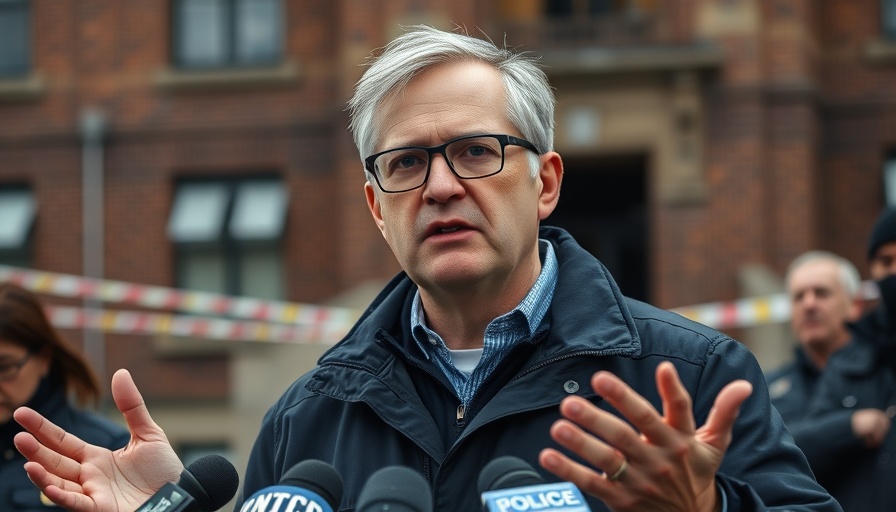
A Safer Turn: How Community Action Changed Traffic Patterns in South Philadelphia
In the heart of South Philadelphia, where vibrant streets meet the ebb and flow of traffic, citizen advocacy has taken a powerful stand against the perilous conditions endangering pedestrian and cyclist lives. Following a series of accidents that tragically included injuries to a pregnant nurse, the city has responded with immediate alterations to the traffic direction on LeCount Street, altering how vehicles navigate this congested area. This change is a beacon of hope for community members and advocates striving for safer streets.
In 'South Philadelphia street changes direction after several accidents,' the discussion dives into the community responses and municipal actions intended to enhance traffic safety, exploring key insights that sparked deeper analysis on our end.
Understanding the Problem: The Dangers on LeCount Street
LeCount Street, particularly in its intersection with South Street, has become notorious for dangerous driving behaviors, partly due to drivers attempting to bypass the traffic light. Residents reported that cars often barreled down this narrow stretch at alarming speeds, catching pedestrians and cyclists off-guard. Ashley, a nurse who has personally assisted multiple victims of these accidents, shared her concern: "That blind spot just makes it impossible." Her home, once a safe haven, had turned into a front-row seat to a distressing spectacle of injuries and accidents.
Community Advocacy Sparks Change
The recent decision by the city to implement traffic changes—specifically a new prohibition on turning right onto LeCount—was driven not only by the data from a traffic calming study but powered by the voices of the community itself. Groups like Philly Bike Action have played a crucial role in amplifying resident concerns, erecting signs, and raising awareness regarding the dire need for safety measures. As a part of a six-month trial, citizens will have the opportunity to voice their opinions regarding the changes, paving the way for continuous improvement in local traffic safety.
Analyzing the Impact of Traffic Changes
This type of directed advocacy can yield significant outcomes. Immediate signs prohibiting turns and ongoing efforts by residents to slow down traffic invoke a sense of collective responsibility and action. Neighbors believe that this will significantly decrease the number of accidents, thereby fostering a safer environment not only for cyclist and pedestrian traffic but for drivers too. This collaborative effort is what community action is all about—it emphasizes that every voice matters in crafting solutions to public safety concerns.
The Emotional Toll of Traffic Accidents
The stories of those affected by the dangerous conditions underscore the emotional toll such incidents can take on a community. The aforementioned injured nurse, despite suffering a broken thumb, expressed gratitude that both she and her baby are safe. However, the long-term psychological effects can be profound, as recurring trauma from witnessing these accidents can plague residents’ peace of mind. Addressing safety on these streets becomes not just a matter of infrastructure but of healing a community spirit.
Envisioning Safer Streets: A Future Outlook
With changes underway, the future of LeCount Street promises the possibility of transformation. A safer streetscape not only reduces the frequency of accidents but enhances the quality of life for all who travel through the area. This ongoing trial will serve as an essential indicator of whether further measures, such as additional road alterations or extended traffic laws, will be necessary. The hope is that this initiative will pave the way for adopting similar strategies in other high-traffic areas across Philadelphia.
Empowering Residents: How to Get Involved
Residents and visitors are encouraged to participate in upcoming community meetings where traffic safety will be discussed. Knowing that local perspective shapes city planning, it is crucial to share experiences and express concerns. Advocate for your neighborhood’s safety; your voice can lead to significant policy shifts that ensure safer streets for everyone.
In conclusion, the recent changes enacted on LeCount Street not only reflect the overwhelming desire for safety but also exemplify a community rallying together to create a more secure environment. The tragic accidents that have unfolded serve as a poignant reminder of the urgent need for action, and it is the hope of many that these changes mark the beginning of safer streets in South Philadelphia.
 Add Row
Add Row  Add
Add 




Write A Comment